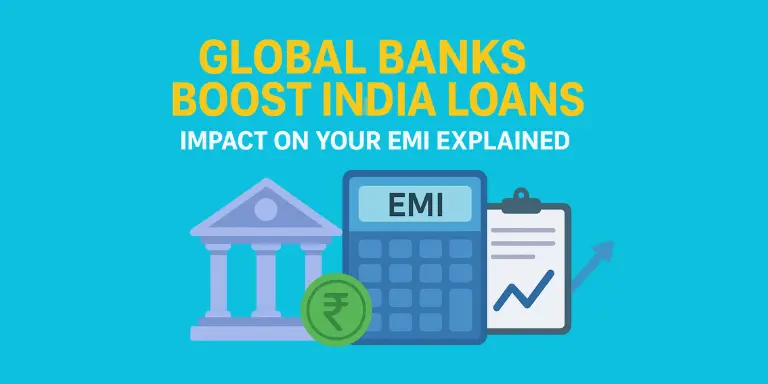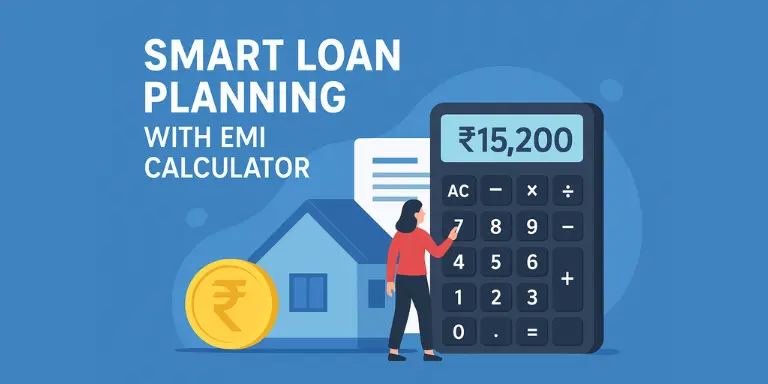How to Use an EMI Calculator to Plan Your Loan Repayment

Introduction
When you are thinking of taking a loan—be it a home loan, car loan or personal loan—one of the most important things to check is: How much will I pay every month? That’s where a good EMI calculator comes in handy. In India, borrowers often search for EMI calculator India or “loan EMI calculator online” to get a quick estimate of their monthly payments and plan their budget accordingly. Using an EMI calculator before you commit to a loan can help you avoid unpleasant surprises and ensure your repayment plan fits your income and lifestyle.
What is EMI?
EMI stands for Equated Monthly Instalment. It is the fixed amount you pay every month until your loan is completely repaid. Each instalment includes two parts:
-
The principal (the amount you borrowed)
-
The interest charged by the lender
So when you borrow a loan, you pay the EMI every month for the tenure (number of years or months) you agreed upon.
Why Use an EMI Calculator?
Here are key reasons why you should use an EMI calculator before applying for a loan:
-
It gives a quick and accurate estimate of your monthly payment.
-
It helps you plug in different values (loan amount, interest rate, tenure) and see how your EMI changes.
-
It aids in budgeting: you can check whether the EMI fits within your personal finances.
-
It allows you to compare different loan offers or scenarios (e.g., a tenure of 10 years vs 15 years).
-
It supports better loan planning so you avoid being trapped with an EMI that’s too high.
How Does the EMI Calculator Work?
The EMI calculator uses a standard mathematical formula. While you don’t need to compute it manually, it’s useful to understand how the numbers are derived.
EMI Formula:
EMI=P×r×(1+r)N(1+r) N−1\text{EMI} = \frac{P \times r \times (1 + r)^N}{(1 + r)^N – 1}
Where:
-
P = principal loan amount
-
r = monthly interest rate (annual rate ÷ 12 ÷ 100)
-
N = loan tenure in months
Example: Suppose you take a loan of ₹20,00,000 at an annual interest rate of 8% for 20 years (240 months).
-
Monthly interest rate r = 8 ÷ 12 ÷ 100 = 0.00667
-
Then EMI = ₹16,729 approximately.
Because the formula is complex and prone to manual errors, using an online EMI calculator is far simpler and more reliable.
Step-By-Step: How to Use the EMI Calculator
Here’s how you can use your EMI calculator smartly:
-
Enter the Loan Amount
Decide how much you want to borrow. Example: ₹10 lakhs, ₹20 lakhs, etc. -
Enter the Annual Interest Rate
Use the current rate offered by lenders for your loan type (e.g., home loan, personal loan). -
Select the Loan Tenure
Choose how many years (or months) you will take to repay the loan. Longer tenure = lower EMI but more total interest. -
Click Calculate
The calculator will show:-
The monthly EMI
-
The total interest payable over the loan period
-
The total amount (principal + interest) you will pay by the end
-
-
Analyse the Results / Play with Scenarios
-
Try increasing or decreasing the tenure and see how EMI changes.
-
Try different loan amounts to find what EMI you can afford.
-
If interest rate drops or you negotiate a better rate, simulate that too.
-
-
Decide if your EMI fits your budget
A general guideline is: your total EMI obligation should ideally be below 40 % of your monthly income. If the EMI is too high, you might stretch your budget.
Key Factors That Affect Your EMI
When you plug numbers into the calculator, keep in mind these three major variables — any change in them will change your EMI.
-
Loan Amount (Principal): The more you borrow, the higher your EMI.
-
Interest Rate: A small increase in rate can increase your EMI noticeably.
-
Loan Tenure: Longer tenure reduces monthly EMI but increases the total interest paid over time.
Practical Tips for Loan Planning Using EMI Calculator
-
Know how much monthly EMI you can afford: Before borrowing, check your monthly income vs other expenses. Use the EMI calculator to set a comfortable EMI limit.
-
Compare the tenure vs interest trade-off: If your EMI budget is tight, you may extend the tenure to lower EMI, but understand you’ll pay more interest overall.
-
Check interest rate fluctuations: If your loan has a floating interest rate, simulate different interest rates in the calculator to see “what if” scenarios.
-
Avoid being EMI-trapped: If your EMI is too close to your monthly take-home pay, any emergency (job loss, medical cost) may stress you.
-
Use the EMI calculator for prepayment planning: If you plan to prepay (part payment) the loan in the future, use the calculator to see how your EMI or tenure will change.
Common Mistakes to Avoid
-
Using only one scenario: Always try multiple loan amounts, interest rates and tenures.
-
Ignoring total interest cost: A low EMI may look tempting, but you might end up paying a lot more over time.
-
Overstretching EMI: Picking a loan just because EMI looks manageable may be risky if rates change or tenure seems too long.
-
Forgetting other costs: Apart from EMI, also account for insurance, maintenance (for home/car), and EMIs for other loans.
-
Not reviewing the loan when interest rates drop: If rates go down or you get a better credit profile, use the EMI calculator to check if refinancing or renegotiating tenure/EMI helps.
Conclusion
Using an EMI calculator is simple but powerful. Before you commit to any loan, plug in your loan amount, interest rate and tenure—and check your monthly EMI. This will help you plan your loan repayment confidently and avoid future stress. When you use a tool labelled loan EMI calculator online, you are taking a smart first step in your financial planning.
Start with the EMI calculator, compare your options, and then take the loan only when the monthly EMI truly fits your budget.


